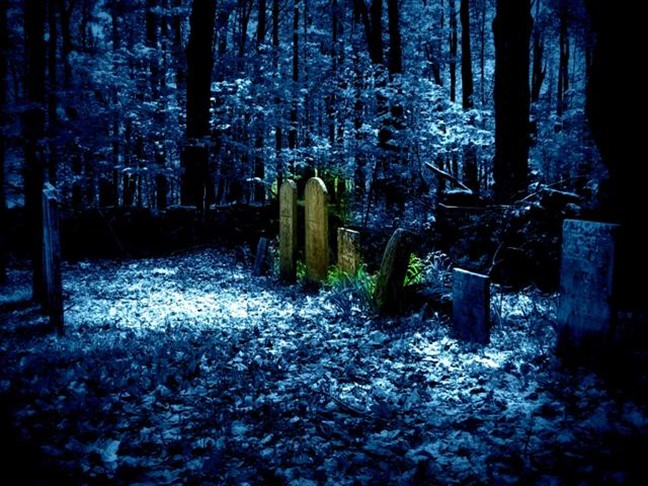
To listen to today’s reflection as a podcast, click here
So why are cemeteries such scary places on the last day of October?
Historians believe that Halloween is the semi-Christianized version of an ancient Celtic festival that spanned October 31 and November 1 called Samhain (pronounced SAW-win) which marked the beginning of winter.
Celtic lore suggested that during Samhain the boundary between the world of the living and the realm of the dead became temporarily permeable. Cemeteries were good candidates for such supernatural “thin places.”
Apparitions from the next world might emerge from graveyards and take nighttime strolls through the villages of Scotland, Ireland, and Wales. This was assumed to be a direct threat to that village’s hope for surviving the winter, and wasn’t particularly good for tourism, either.
What defense could one mount against the walking dead?
The Druids, who represented the thoughtful domain of Celtic culture, taught that villagers might give them “treats” of food. Otherwise the spirits might play “tricks” on the living.
Then there was the mask option: You could make yourself look scary and frighten the dead back to their graves. Halloween masks were originally donned as a means to scare away whatever demons or ghosts might appear. In our own time, a mask portraying one of the Kardashians seems to be particularly effective at doing this.
Cemeteries thus became regarded as unusually creepy real estate on the last night of October.
But there’s another reason cemeteries generate dread.
They are tangible reminders that life comes to an end. Including your life. And mine. Confronted with grave markers, we’re forced to confront some unsettling questions: What is the meaning of my life? Am I wasting this one shot I’ve been given? Is there life after death? Is there life before death?
The range of possible answers is deep and wide.
One of the characters in the movie Say Anything reflects: “You get to be thinkin’ about how short life is, and how maybe everything has no meaning, because you wake up and then you’re fryin’ burgers, and you’re like sixty or seventy, and then you check out, you know, and what are you doing, and I just don’t need to be thinkin’ about those kind of things.”
In the movie River’s Edge, another teen actor is even more to the point: “I’ve got this philosophy. You do stuff. Then it’s done. Then you die.”
Kenneth Gergen, in his book The Saturated Self, says that people need to grow up and realize that the quest for meaning is a dangerous waste of time. We need to give up searching for God and truth and go figure out a way to enjoy life.
Then there’s Jesus of Nazareth.
One of his most famous conversations happened in a cemetery.
Standing before the fresh grave of a friend, Jesus says to the sister of the deceased, “You don’t have to wait for the End. I am, right now, Resurrection and Life. The one who believes in me, even though he or she dies, will live. And everyone who lives believing in me does not ultimately die at all.” (John 11:25-26, The Message)
That’s probably Christianity’s most celebrated claim.
If true, it means that we don’t have to feel dread in the presence of tombstones. Yes, we will have to abandon our present bodies, one way or another, in order to exit this world.
But life doesn’t end in a cemetery. And new bodies await us in God’s new creation. As Dallas Willard once wrote, “Christians are people who are better off dead.”
Taking that to heart is the best way to laugh off the scary aspects of Halloween.
And the best news is that we can still hang on to the chocolate.
